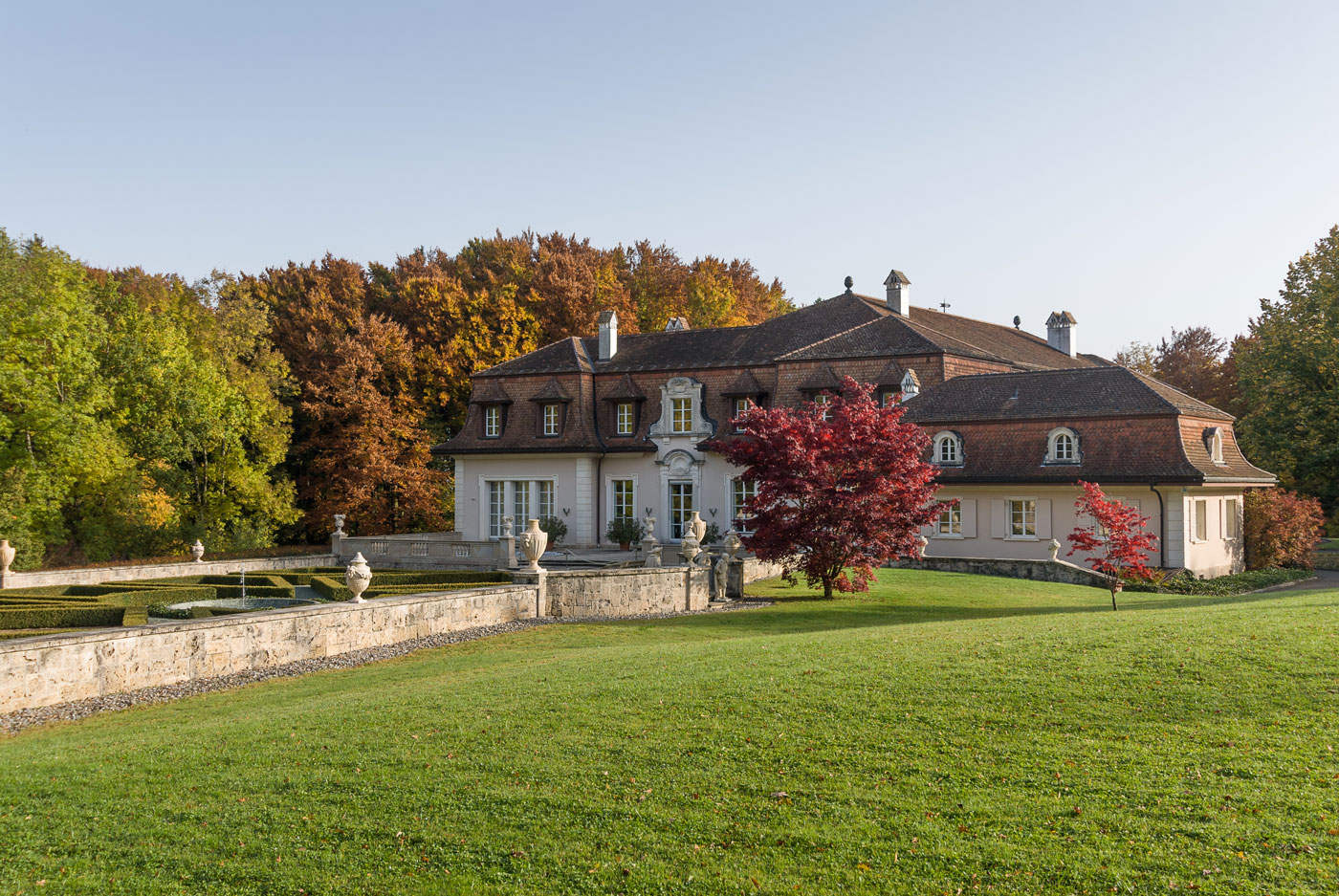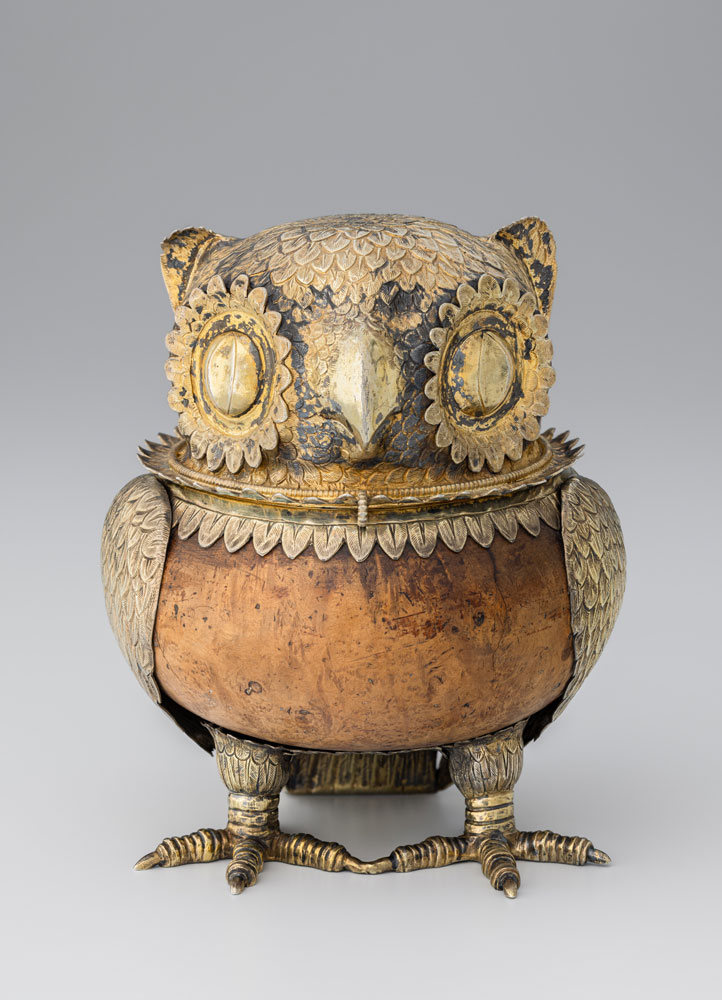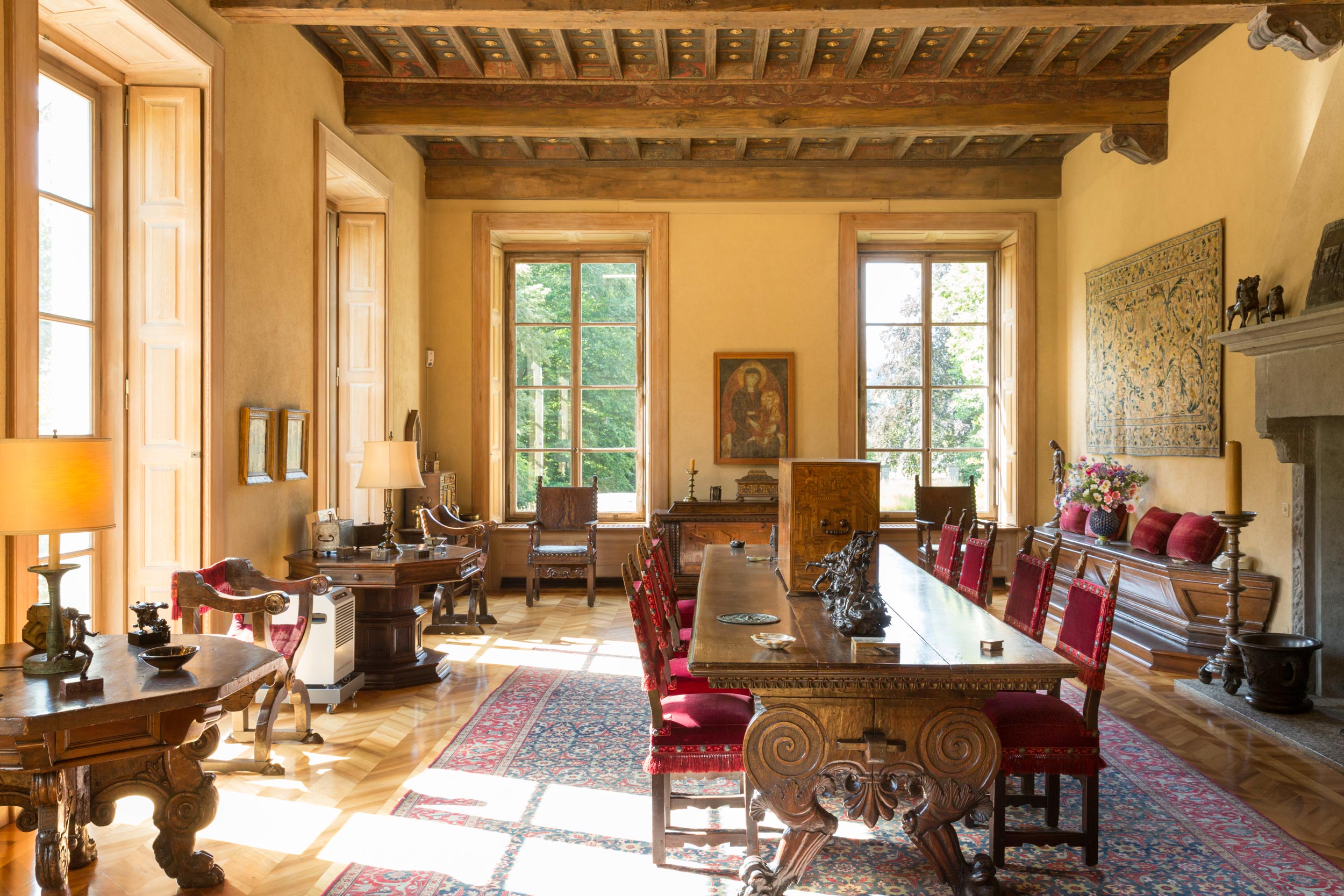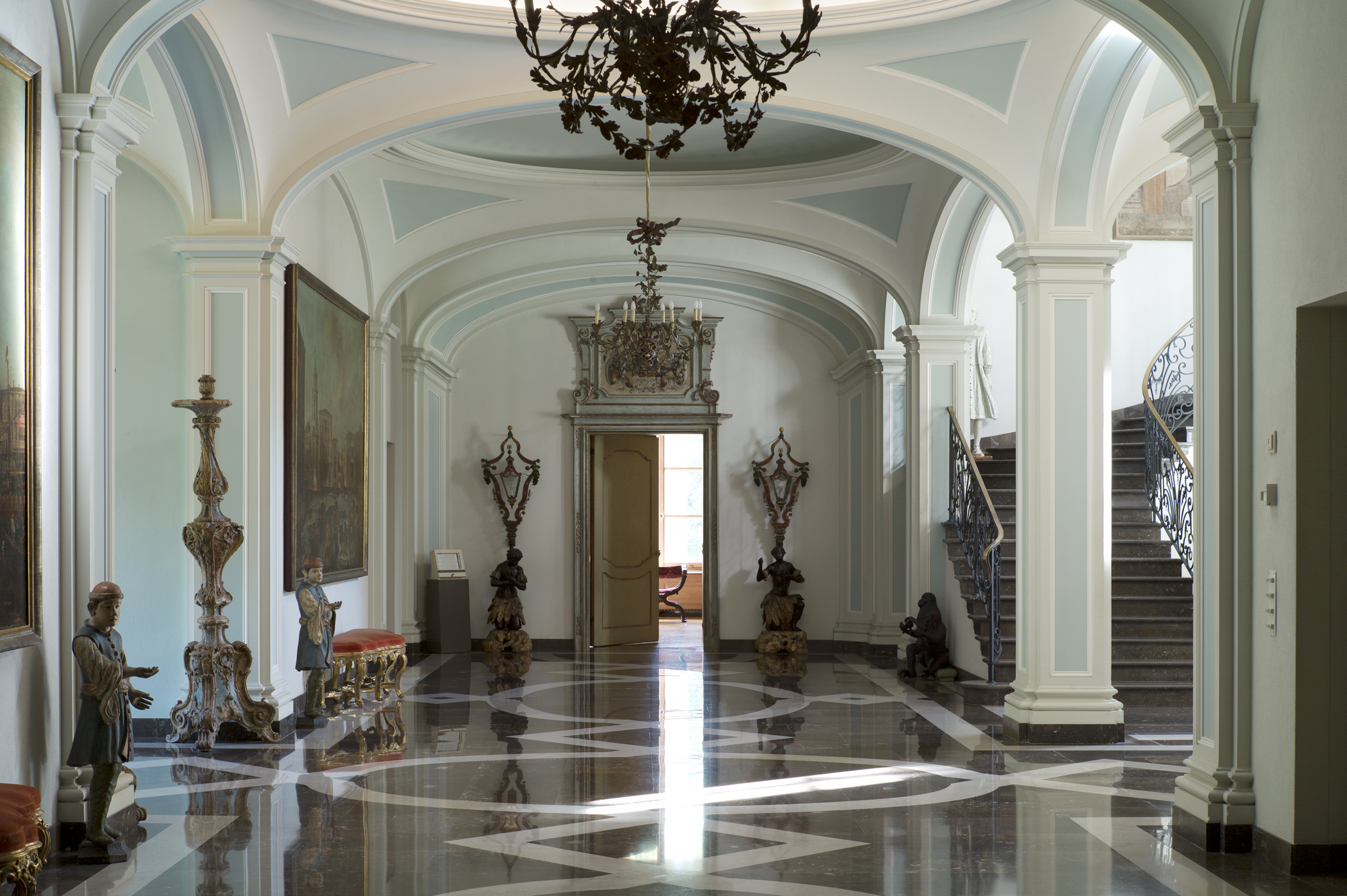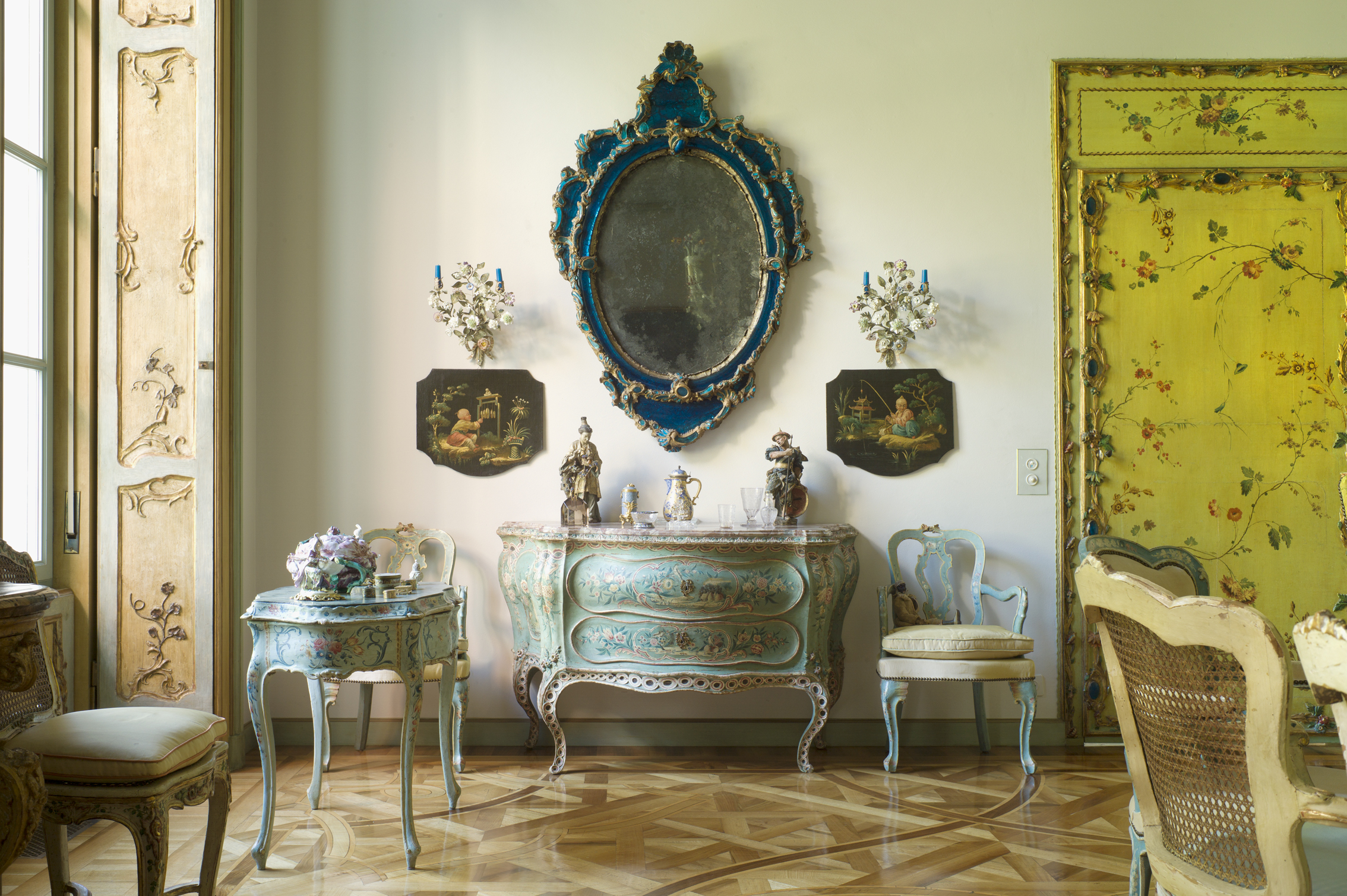Villa Abegg – The Founders’ Private Home is now a Museum Guided Tours by Appointment, Daily from 28 April to 10 November 2024
When the Abegg-Stiftung was founded in 1961, Werner and Margaret Abegg already had plans to open their home to the public at some future date. In both period and theme, the Villa Abegg was intended to complement and augment the institute’s collections. Architecturally, the villa completed in the late 1960s follows the North Italian Baroque, as represented by the school of Filippo Juvara (1678 – 1736). The formal gardens and fountains belong to a similar tradition. The reception rooms on the ground floor are appointed with historical wall panelling, chandeliers and furniture, and decorated with paintings, sculpture and tableware. The Villa Abegg nevertheless retains the character of an inhabited home that visitors may visit, rather like invited guests, in small groups only.
Every year, these guided tours of the villa single out a different work of art or group of objects for attention.
